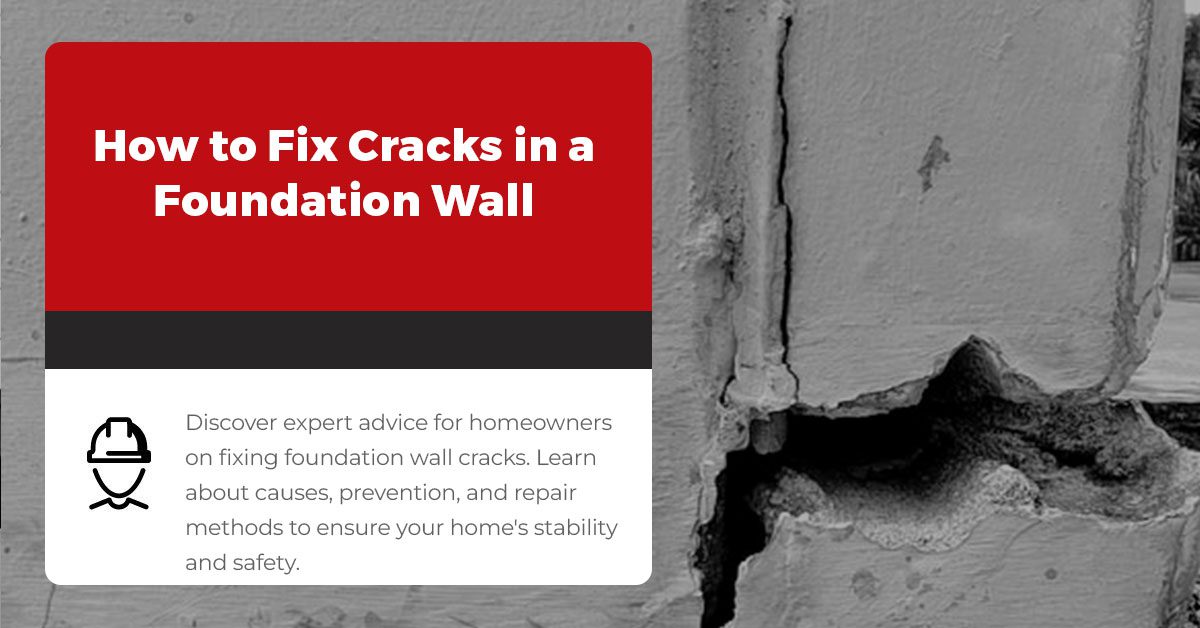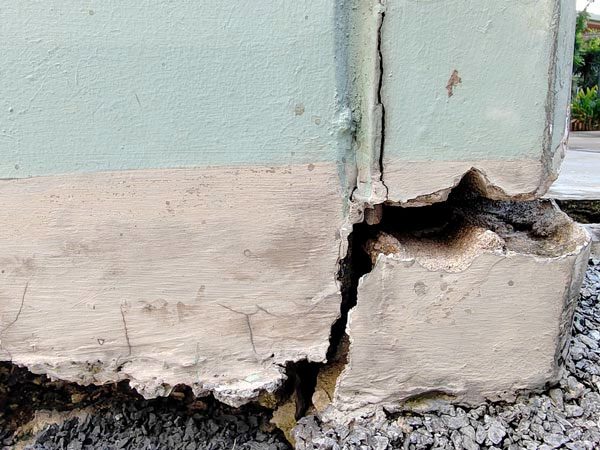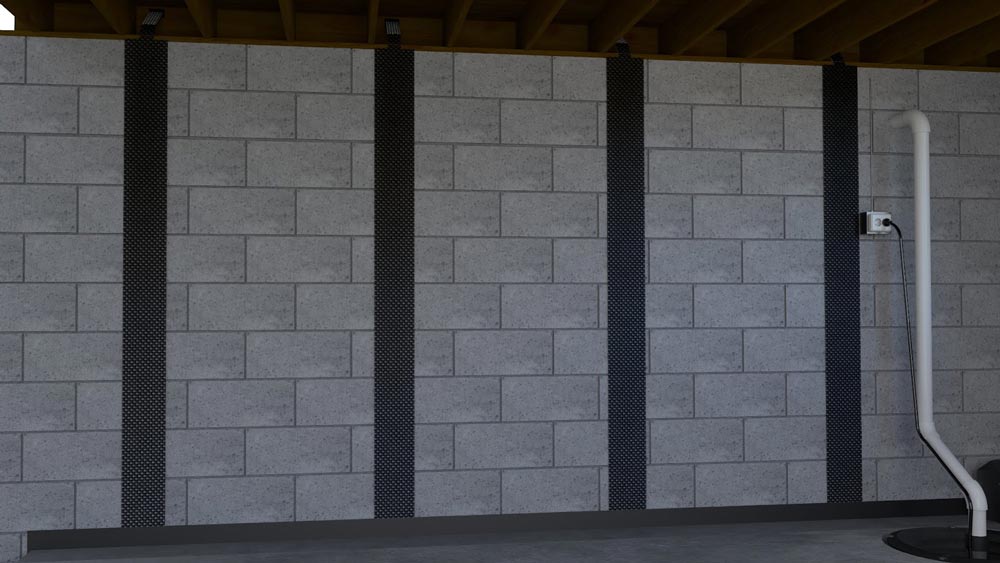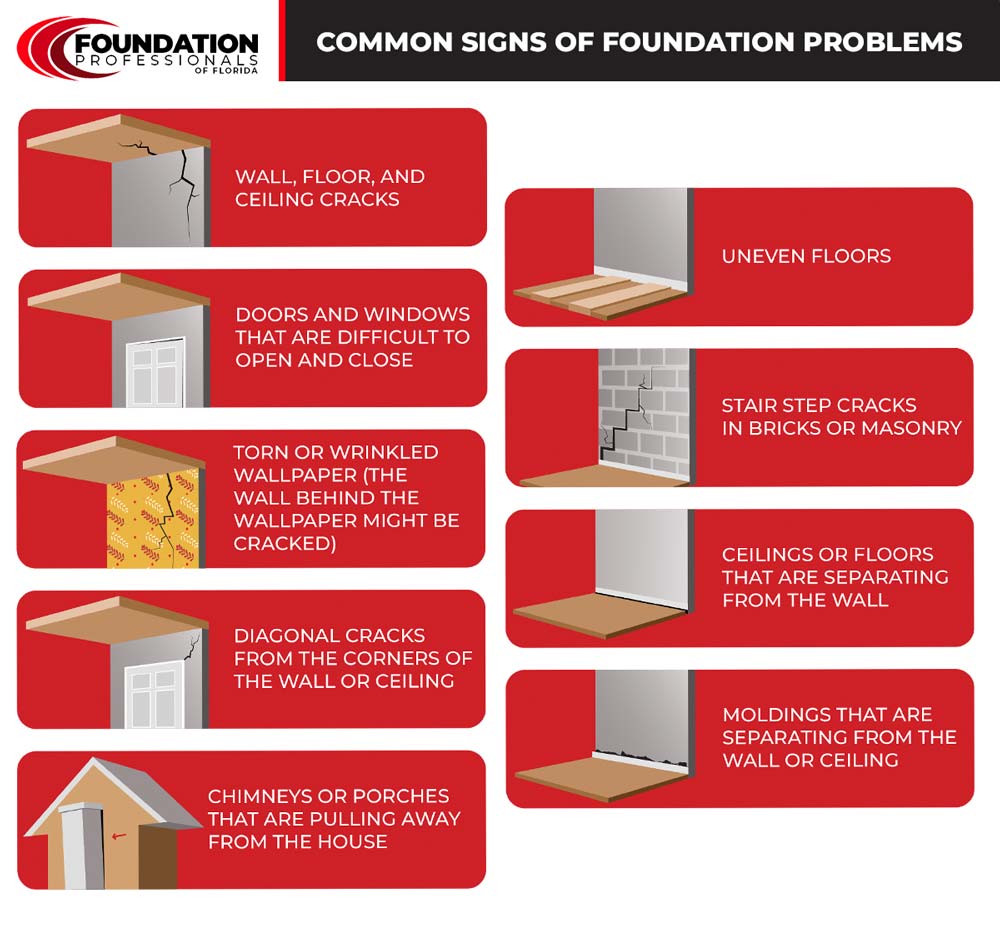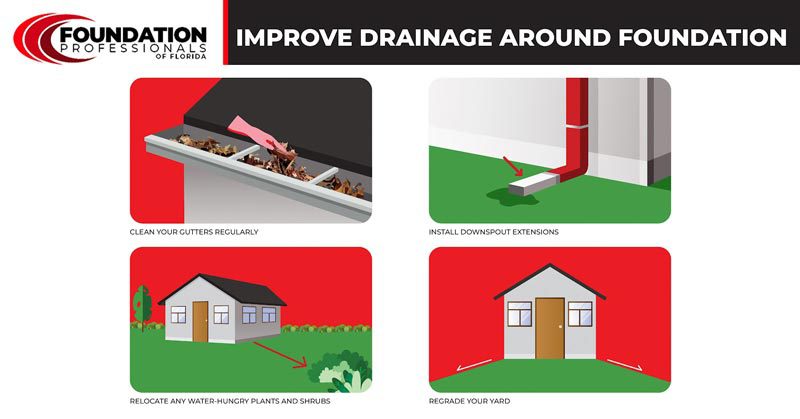Does there seem to be something off with your foundation wall? Have horizontal or diagonal cracks started to appear? Is the wall starting to bow? In this article we’ll answer the following questions:
- Why do foundation walls crack?
- How can I determine what type of fix is needed?
- How are foundation cracks repaired?
- How can I prevent foundation problems in the future?
Why Do Foundation Walls Crack?
There are various reasons why a foundation wall may experience damage, including the following:
- Hydrostatic pressure – Poor drainage around a foundation can cause hydrostatic pressure to build up and push against foundation walls. If the pressure isn’t relieved, the walls could eventually start to bow inward and even crack.
- The initial construction could be at fault – The soil underneath the home should always be thoroughly compacted before the foundation is laid. If builders are lax in this regard, the house may settle unevenly, causing differential settlement that can threaten the integrity of the foundation.
- Improperly mixed concrete.
- Problematic soils – Not all soils are alike. Some are prone to erosion, while others swell as they absorb moisture and then shrink as they dry out. This creates movement in the ground around the foundation and can cause differential settlement.
- Temperature and moisture fluctuations – Changes in ground moisture levels, along with fluctuations in temperature could lead to the expansion and contraction of the soil around the foundation, causing the foundation to move.
How Can I Determine What Type of Fix Is Needed?
Not all foundation cracks are created equal. Some cracks in a foundation wall affect the home’s structural integrity, while others are just unsightly. So, which is which?
Hairline cracks in a poured concrete foundation wall
If you notice thin hairline cracks in the foundation, it’s not necessarily something to get excited about. This can be a sign of the foundation naturally aging or cracks caused by shrinkage during the concrete curing process. However, it’s best to monitor these cracks to see if they increase in length or width. Cracks should not exceed ⅛ inch in width. If the foundation crack is wider than ⅛ inch, have a professional make an inspection. This action will ensure that you do not have a structural problem to worry about.
How to monitor hairline cracks to make sure they’re not growing
There are a couple of ways to easily monitor hairline cracks:
- Draw a pencil mark at both ends of the crack and then write the date next to it.
- Put a tape measure next to the widest part of the crack and then take a time/date stamped photo of the fault. By comparing the pictures monthly, you’ll know if you need a repair.
Larger cracks in a foundation wall
If you see a large crack (often horizontal or diagonal) in your foundation wall (sometimes accompanied by bowing), it indicates a structural problem requiring professional assistance. What’s probably happening here is that hydrostatic pressure has built up in the ground around the foundation and is exerting tremendous pressure on your foundation wall.
Sometimes, cracks in a foundation wall will resemble stair steps. This is almost always a sign the foundation has moved and it’s time to get a foundation repair contractor involved.
How Can I Repair Foundation Cracks?
The chosen repair method for a crack in a foundation wall depends on what caused the crack. Minor, non-structural cracks can sometimes be repaired by a homeowner looking for a DIY project. However, structural cracks always need to be handled by an experienced foundation repair contractor.
Repairing non-structural cracks caused by concrete shrinkage during curing
To repair hairline cracks in a foundation wall caused by shrinkage, you can use urethane caulk provided the crack is no more than 2 inches deep.
Before injecting a hairline crack with caulk, make sure that the surface area is clean so that the urethane caulk will adhere to the surface where the problem lies. A wire brush can be handy in cleaning up the area under consideration ahead of time. Before application, be sure to vacuum up any residual dust or debris as well, to keep the urethane bond intact once applied.
After application of the urethane caulk, be sure to smooth out the surface with a putty knife.
If the problem goes a little deeper
If the cracks are deeper than 2 inches you could use a concrete crack injection kit. Prepare the surface of the wall in very much the same way as discussed when using the urethane caulk method mentioned above and follow the manufacturer’s instructions.
For heavy-duty wall repair
If the cracks in the foundation wall are structural, they’ll need to be fixed by a foundation repair professional. Possible solutions for foundation walls damaged by hydrostatic pressure include wall plate anchors to pull the bowed wall back into alignment and carbon fiber straps that can be painted over for a nearly invisible finish. Both of these are long-lasting repairs.
If the cracks in the foundation wall were caused by differential settlement, a process called underpinning is required. Push piers (strong steel supports that are mechanically driven into the ground) or helical piers (corkscrew-shaped pillars that twist into the solid earth) can be used to stabilize a foundation that has settled into the ground unevenly.
Signs of differential settlement include the following:
- Windows and doors sticking
- Uneven floors
- Cracked walls, ceilings, and floors
- Cracks in drywall
- Stair step cracks in brick or masonry
How Can I Prevent Foundation Problems?
Since most foundation problems are caused by excess moisture in the ground, be sure to keep water away from your home. Here are some ways to do that:
- Keep gutters and downspouts clean and free from debris.
- Install downspout extensions to direct runoff away from the foundation before release.
- If you notice water collecting near your home, you may need to regrade the yard around the foundation so that it slopes away from the house.
- Consider removing any trees that are too close to your home’s foundation. As innocuous as a tree may seem, some of them have extensive root systems that could damage the structural integrity of your foundation.
Contact the Pros
If you are located in North or Central Florida and are having issues with your foundation, please feel free to contact Foundation Professionals of Florida today for a free inspection and estimate.

